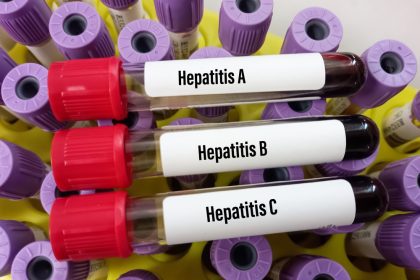New metric surpasses BMI for disease prediction

The Body Roundness Index (BRI) is quickly becoming a key measurement tool in the field of cardiovascular disease (CVD) research. This innovative index offers a far more accurate and reliable prediction of cardiovascular risk than traditional measurement methods, such as body mass index (BMI). Unlike conventional metrics that rely on simple height-to-weight ratios, the BRI focuses on waist circumference and abdominal fat distribution. This targeted approach allows healthcare professionals to gain a clearer picture of a patient’s cardiovascular health, making it an essential tool for assessing risk and determining appropriate interventions.
The significance of BRI lies in its ability to go beyond the surface level of body composition and delve into the specifics of abdominal fat. Abdominal obesity, often seen as a sign of visceral fat buildup, has long been associated with a higher risk of cardiovascular issues. Traditional methods, such as BMI, often fail to differentiate between visceral and subcutaneous fat, which are both important factors in determining a person’s risk for cardiovascular diseases. By focusing specifically on waist circumference and fat distribution, BRI offers a more comprehensive assessment of cardiovascular health, which can lead to better patient outcomes.
Research revelations
Recent research has shed light on the undeniable link between the Body Roundness Index and cardiovascular disease. A growing body of studies has demonstrated that a high BRI score is strongly correlated with an increased risk of developing heart disease, stroke, and other cardiovascular issues. Health data from large-scale studies provide compelling evidence that body shape, particularly the distribution of abdominal fat, plays a pivotal role in heart health outcomes.
For instance, in studies comparing individuals with high and low BRI scores, those with higher values consistently showed a greater likelihood of developing heart-related complications. This research has proven instrumental in demonstrating that traditional methods, while useful, may not be sufficient in predicting cardiovascular risk in all populations. As a result, BRI is being championed as a more effective and precise tool for risk assessment, offering deeper insights into the connection between body composition and cardiovascular health.
Key findings
The findings from the research into the Body Roundness Index highlight several critical aspects of how it functions as a predictor of cardiovascular risk. First and foremost, BRI has shown to predict cardiovascular risk with enhanced accuracy compared to other traditional measures. This is largely due to the index’s focus on abdominal fat distribution, which is a more significant determinant of heart disease risk than BMI or other metrics. The increased precision of BRI means that healthcare professionals can more effectively identify individuals who are at a higher risk of heart-related diseases, allowing for earlier intervention.
Another key benefit of BRI is its ability to identify high-risk individuals more effectively. Traditional risk factors like BMI or waist-to-hip ratio may not provide an accurate risk assessment, especially in people with similar body shapes but different health outcomes. In contrast, BRI is tailored to account for the specifics of abdominal fat, making it a more reliable indicator of risk. This improved assessment tool also aids in the detection of abdominal obesity, a condition that has long been associated with increased risk for heart disease.
By providing clearer indicators for preventive care, BRI offers healthcare professionals a better tool for monitoring patients’ progress. It allows for more tailored interventions, reducing the chances of missed diagnoses and ensuring that individuals receive appropriate care before more severe issues arise.
Clinical implications
The clinical implications of incorporating BRI into cardiovascular health assessment are profound. For healthcare professionals, the ability to measure abdominal fat distribution through a single, accurate index opens up new avenues for patient care. With a better understanding of each individual’s risk, clinicians can make more informed decisions regarding treatment options, lifestyle interventions, and monitoring strategies. This leads to enhanced risk assessment capabilities, which can significantly improve long-term health outcomes for patients.
In addition to improving risk assessments, BRI allows for earlier intervention. Early identification of high-risk individuals enables healthcare providers to recommend preventive measures such as diet changes, increased physical activity, and medical treatments before serious health complications arise. This proactive approach helps to reduce the incidence of cardiovascular diseases and improve overall public health.
Another advantage is the improved patient monitoring that comes with using BRI. By regularly tracking an individual’s BRI score, healthcare professionals can better assess the effectiveness of treatments and lifestyle changes. This continuous monitoring provides a clearer picture of a patient’s health status, enabling more effective adjustments to care plans and helping to keep cardiovascular risks in check.
Finally, BRI aids in creating more effective prevention strategies. As more research becomes available, healthcare providers will be able to use BRI not only to assess current risks but also to predict future cardiovascular health. This forward-thinking approach could revolutionize preventive care, making it more personalized and effective.
Future applications
As the medical community continues to embrace the Body Roundness Index, its applications are expected to expand. While the tool is already showing promise in improving cardiovascular risk assessment, its use could eventually extend to other areas of healthcare, such as obesity management, diabetes prevention, and even cancer research. The potential for BRI to become a central part of medical evaluations is clear, with its ability to provide insights into fat distribution that are simply not available through traditional metrics.
The growing understanding of BRI’s role in healthcare will likely lead to more refined and targeted interventions. By offering a more nuanced approach to body composition, BRI can contribute to more personalized healthcare strategies that take into account not just weight but also how fat is distributed within the body. This deeper understanding of fat’s role in health can have far-reaching effects on how diseases are diagnosed and treated.
Research impact
The research surrounding the Body Roundness Index has been transformative, advancing our understanding of how body composition influences heart health. It has highlighted the importance of abdominal fat and its role in cardiovascular disease risk, providing healthcare professionals with a more precise tool for assessing this risk. As research in this field continues to grow, it is expected that BRI will play an increasingly central role in the prevention and management of cardiovascular diseases.
By improving our knowledge of the relationship between fat distribution and heart health, BRI research is also paving the way for better preventive measures. This knowledge can ultimately help to shape new treatment protocols, refine diagnostic criteria, and develop public health strategies aimed at reducing cardiovascular disease rates globally. In this way, BRI has the potential to not only improve individual health outcomes but also to revolutionize the way the medical community approaches cardiovascular health on a larger scale.













